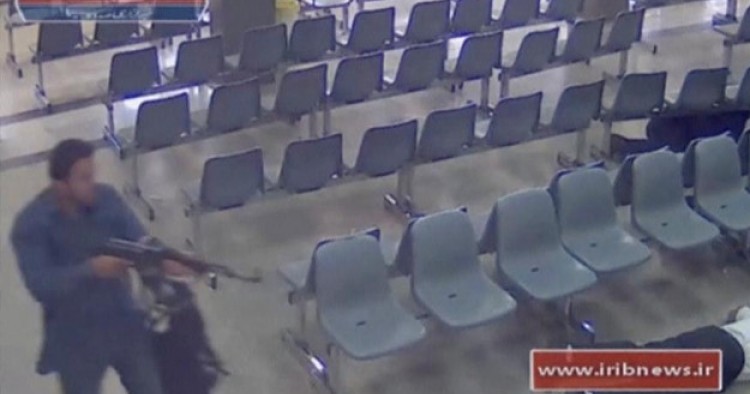The deputy commander of the Islamic Revolution Guards Corps (I.R.G.C.) alleged today that the United States and Saudi Arabia plotted the terrorist attacks in Tehran to mask their failures in regional wars. “This incident was a result of a joint political plan in Riyadh by the Saudis, America and the Zionist regime,” Brigadier General Hossein Salami said in an interview with the Iranian state television. “While America, the Saudis and some reactionary regional and Western countries were attempting to change the regional equations in their favor and threaten the Islamic Republic, they failed to execute their designs in Syria and Iraq and they were defeated in political conflicts in the region,” he asserted. “What happened in the American-Saudi summit some time ago in Riyadh was supposed to have a political message; and the Wednesday terrorist action was most likely that.” He vowed the I.R.G.C. will take revenge against those responsible for the attacks.
The I.R.G.C. general also praised the performance of the Iranian security forces in tackling the terrorists and minimizing casualties. “The actions by the operational forces in neutralizing this blind sedition were commendable, and the Iranian nation should be congratulated on this success and major victory,” he said, adding that the Iranian forces also sent a strong message to foreign enemies. “In our operations yesterday, we buried alive a political dream of the enemies and showed that Iran is the graveyard for those who try to jeopardize its security.”
Salami further claimed that Iran had the superior hand in shaping political and security dynamics in the Middle East.
He also referred to Saudi Deputy Crown Prince Mohammad bin Salman recent comments that Riyadh would not wait for Tehran to take over Yemen but would instead take the battle inside Iran. “These remarks show that Saudi Arabia is the place for plots against the Islamic Republic of Iran,” he said. “But their dreams will never come true.”
The Iranian general stressed that Iran’s security and intelligence agencies should now pay more attention to foil terrorist plots.
Comment: While Salami and other Iranian leaders try to downplay the attacks, the terrorist attacks – the first major assault by the Islamic State inside Iran to date – indicated that the Islamic State has been able to penetrate the Islamic Republic. At least five assailants were involved in the twin attacks, and Iranian officials admitted that the Islamic State had recruited the attackers inside Iran. The attacks also discredited Iranian leaders’ claim that the I.R.G.C.’s military involvement in regional conflicts has kept Iran as an “island of stability” in a troubled neighborhood. They also exposed major security lapses as the I.R.G.C. and the Iranian police forces were surprisingly ill-prepared to deal with the situation.
Moreover, the attacks showed that the Islamic State is trying to open a new battleground in Iran as the terror group is being driven out of its strongholds in Iraq and Syria. In March, the Islamic State released a video in which it appealed to the Iranian Sunni community to establish terror cells and conduct attacks against Shiites inside Iran. Iranian Sunnis have rejected the Islamic State’s call to rise up against the government, but some members of the Sunni community in impoverished and marginalized northwestern and southeastern regions may be vulnerable to the Islamic State propaganda.
The Middle East Institute (MEI) is an independent, non-partisan, non-for-profit, educational organization. It does not engage in advocacy and its scholars’ opinions are their own. MEI welcomes financial donations, but retains sole editorial control over its work and its publications reflect only the authors’ views. For a listing of MEI donors, please click here.













